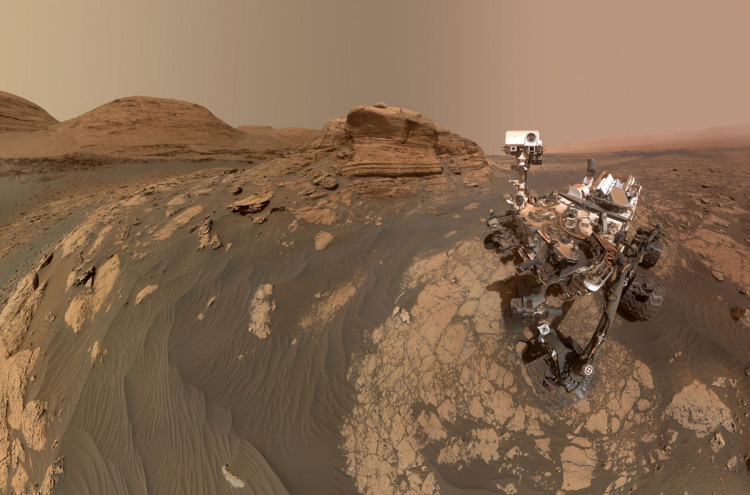NASA's Jet Propulsion Laboratory (JPL) released Tuesday a magnificent "selfie" taken by the Curiosity Mars rover.
The Curiosity team explained in a tweet that the image was captured near the impressive rock formation known as "Mont Mercou," after a mountain in France's southern region.
The outcrop, which stands about 20 feet (6 meters) tall, is captured in all its glory in a new selfie, as well as in a pair of panoramas that provide a 3D view. Curiosity is pictured in front of Mont Mercou, with a new drill hole nearby at a rock sample dubbed "Nontron," the mission's 30th sample to date.
NASA says that in order to create this finished image, the rover needed to use two different cameras.
"The panorama is made up of 60 images taken by the Mars Hand Lens Imager (MAHLI) on the rover's robotic arm on March 26, 2021, the 3,070th Martian day, or sol, of the mission," NASA explained. "These were combined with 11 images taken by the Mastcam on the mast, or "head," of the rover on March 16, 2021, the 3,060th Martian day of the mission."
The Curiosity Rover has been sending back images for nearly a decade. In 2013, the Curiosity rover returned a breathtaking self-portrait that included both the surface underneath the rover and the dust-filled sky. The rover marked its first anniversary the following year with another selfie taken from a closer viewpoint.
On Earth, Mont Mercou is situated in the southeast of France, near the village of Nontron. Since Mars orbiters detected nontronite, a form of clay mineral found close to Nontron in the area, the team chose Nontron-related nicknames for this region of the Red Planet.
Surface missions give landmarks nicknames so that mission team members may refer to rocks, soils, and other geologic features of interest in a systematic way.
You can download the Curiosity rover's massive 105.2MB selfie image here.






